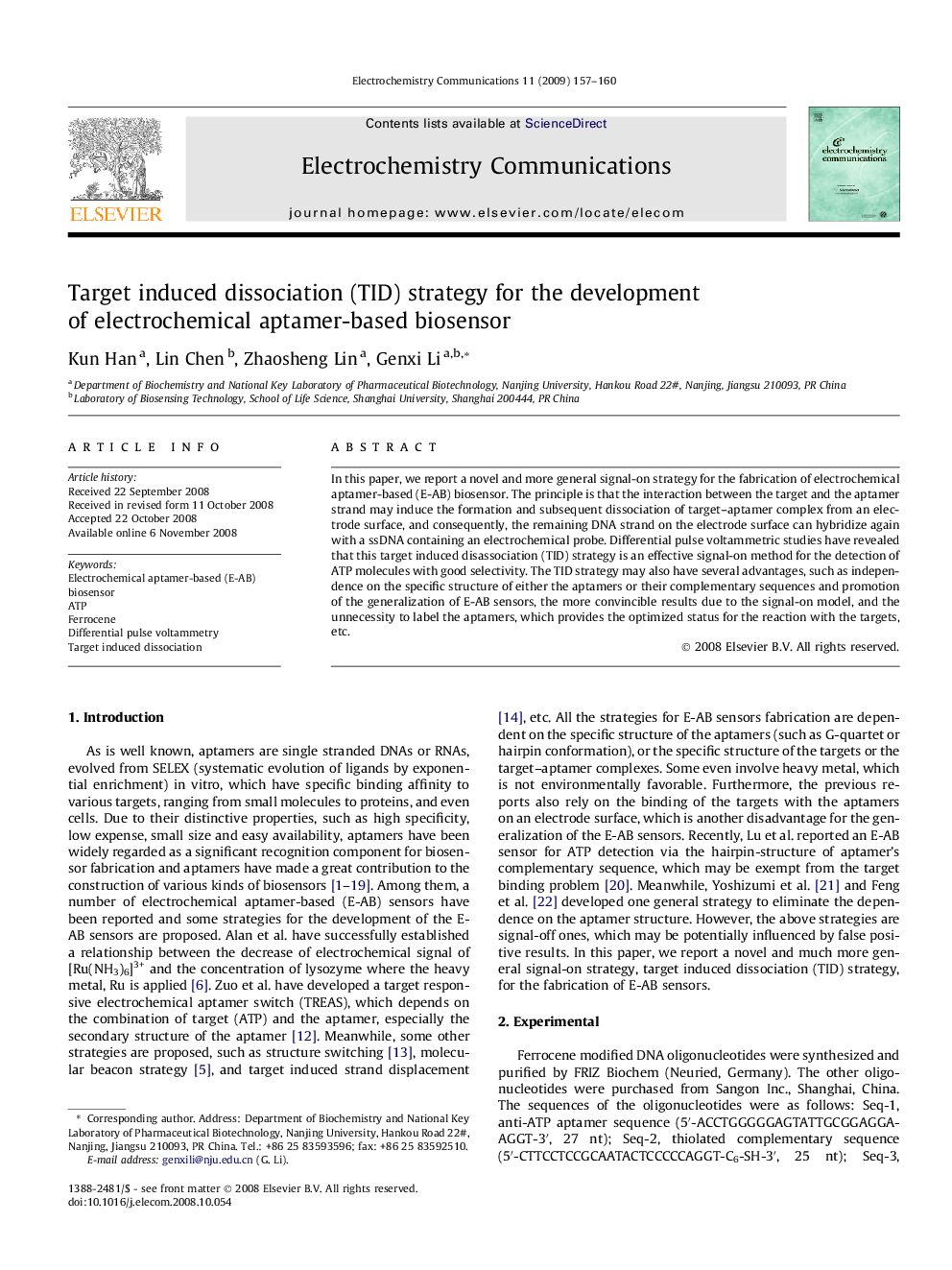| Article ID | Journal | Published Year | Pages | File Type |
|---|---|---|---|---|
| 181831 | Electrochemistry Communications | 2009 | 4 Pages |
In this paper, we report a novel and more general signal-on strategy for the fabrication of electrochemical aptamer-based (E-AB) biosensor. The principle is that the interaction between the target and the aptamer strand may induce the formation and subsequent dissociation of target–aptamer complex from an electrode surface, and consequently, the remaining DNA strand on the electrode surface can hybridize again with a ssDNA containing an electrochemical probe. Differential pulse voltammetric studies have revealed that this target induced disassociation (TID) strategy is an effective signal-on method for the detection of ATP molecules with good selectivity. The TID strategy may also have several advantages, such as independence on the specific structure of either the aptamers or their complementary sequences and promotion of the generalization of E-AB sensors, the more convincible results due to the signal-on model, and the unnecessity to label the aptamers, which provides the optimized status for the reaction with the targets, etc.
